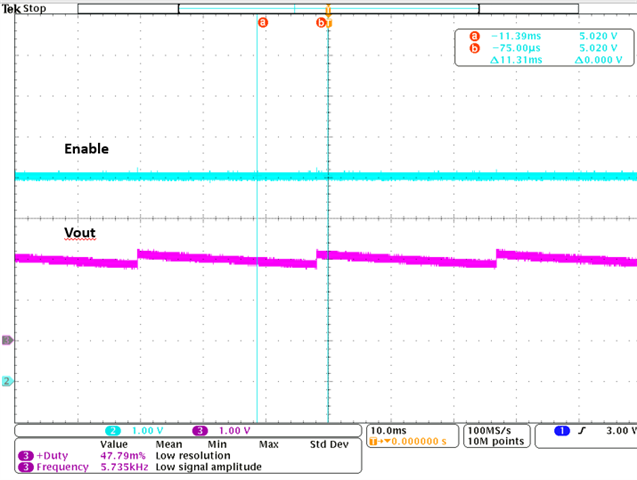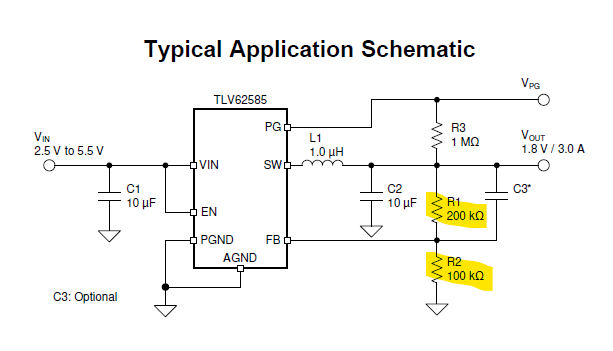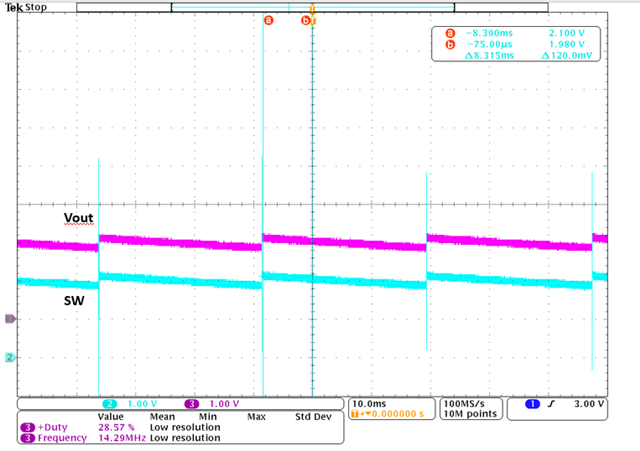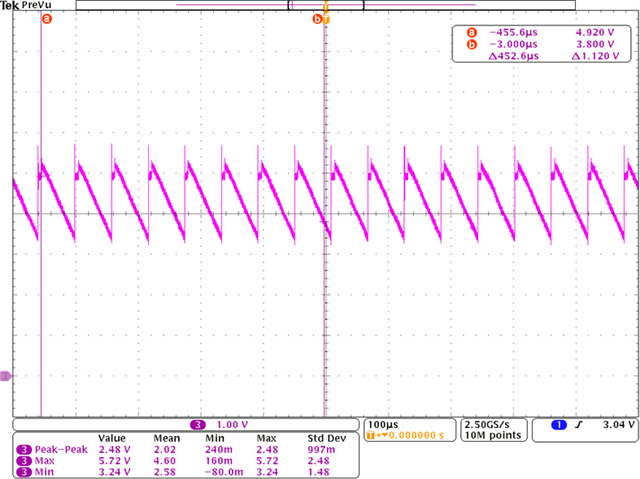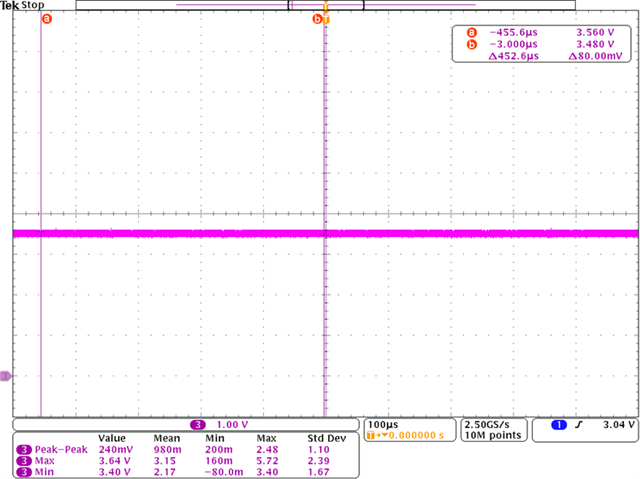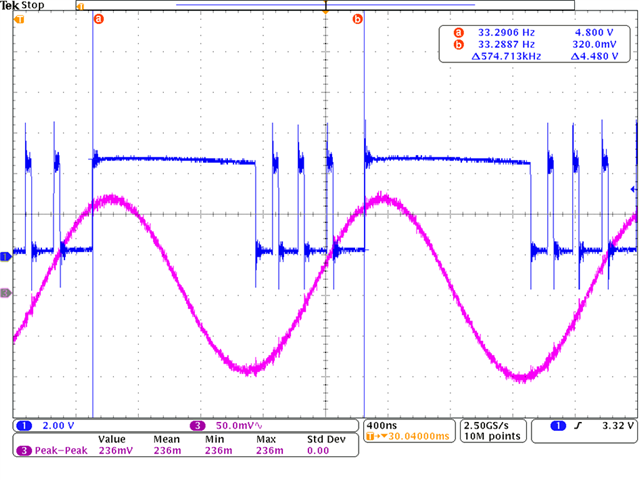Hi Ti experts,
Have a nice day. Recently, I am using TLV62585 the circuit as below:

I can't understand why the output waveform is so weird. The output has already changed to 2.2V cause my RfbT & RfbB followed the spec from (432k & 93.1K) change to
(200k and 100k).
Also, I measured the SW waveform is weird, too. So please help if I misunderstand something.
